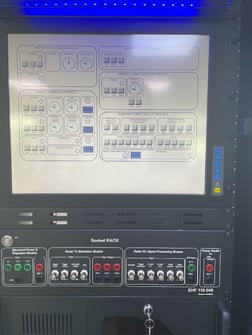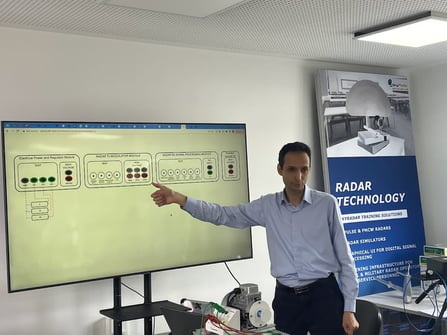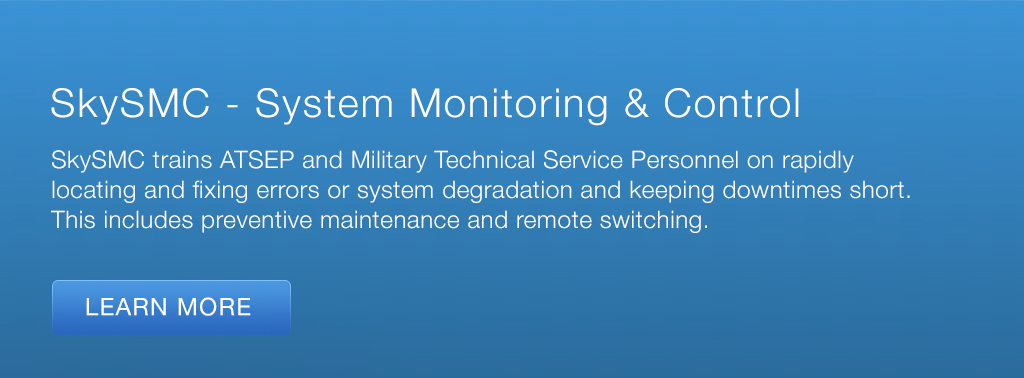Air Traffic Control (ATC) systems ensure safe air travel. Transmission errors, like phase matching, can compromise safety. This article examines the impact, causes, incidents, and solutions for transmission media errors caused by phase matching in ATC.
Introduction
Air Traffic Control (ATC) systems play a critical role in ensuring the safety and efficiency of air travel. These systems rely on the accurate transmission of data between various components such as radars, communication systems, and navigation aids. However, errors in the transmission of data can occur, leading to potential safety hazards. One type of error that can occur in the transmission of data is due to phase matching. In this article, we will explore the impact of transmission media errors due to phase matching in ATC, the factors responsible for these errors, the types of transmission media errors caused by phase matching, reported aviation incidents related to phase matching errors, and the steps that can be taken to rectify and prevent these errors.
Definition of Transmission Media Error Due to Phase Matching
Transmission media errors due to phase matching occur when the phase of a transmitted signal is not matched with the phase at the receiver end. The result is a distortion of the signal, which can lead to errors in the ATC system. Phase matching is essential in ensuring that the phase of two or more signals traveling through different media is synchronized. The synchronization of phase is necessary for accurate data transmission in various ATC systems such as radars, communication systems, and navigation aids.
What is Phase Matching? Explain with an Example
Phase matching is the synchronization of the phase of two or more signals traveling through different media. This synchronization ensures that the signals arrive at the receiver at the same time and with the same phase. Phase matching is crucial in various ATC systems such as radars, communication systems, and navigation aids.
For example consider an ATC radar system that sends out a signal to detect the position of an aircraft. If the signal is delayed or has a different phase on its way back, it can cause errors in the radar reading. Phase matching ensures that the phase of the signal sent out by the radar is synchronized with the phase of the signal received back from the aircraft. This synchronization ensures that the position of the aircraft is accurately detected.
Scenario that illustrates impact of transmission error related to Azimuth Change Pulse on Air traffic Control Services
Here are two pedagogical scenarios that illustrate the impact of transmission errors related to phase matching on air traffic control services
Scenario 1: The Disrupted Surveillance
In a bustling air traffic control center, controllers rely on radar systems to monitor and guide aircraft through a busy airspace. The radar system utilizes the Azimuth Change Pulse (ACP) technique to accurately track the positions of aircraft.
Suddenly, a transmission error related to ACP occurs, causing discrepancies in the azimuth measurements received by the ATC system. The error leads to incorrect positioning of aircraft on the radar display, creating confusion for the controllers.
As a result, the controllers face challenges in accurately determining the precise positions of aircraft. This hampers their ability to provide precise guidance to pilots and ensure the required separation between aircraft. Delays in issuing instructions and potential miscommunication further compound the situation.
The impact of this transmission error is felt throughout the airspace, leading to increased mental workload for controllers, potential safety risks, and reduced efficiency in air traffic control services.
This scenario highlights the critical importance of accurate transmission of azimuth data in ATC systems. It underscores the need for robust systems and procedures to rectify and prevent transmission errors, ensuring the safe and efficient management of air traffic.
Scenario 2: The Misaligned Antennas
In a busy air traffic control center, controllers rely on reliable communication systems to exchange crucial information with pilots. However, a transmission error related to frequency modulation occurs, disrupting the clarity of communication between the controllers and aircraft.
As a result, pilots receive distorted or unintelligible instructions, leading to confusion and potential misinterpretation of critical information. The controllers struggle to effectively convey important details such as altitude changes, route modifications, and landing instructions, hindering the smooth flow of air traffic.
The impact of this transmission error is evident as pilots request repeated clarifications, causing delays and inefficiencies in air traffic control services. Furthermore, miscommunication can result in incorrect aircraft spacing or improper coordination between aircraft, increasing the risk of mid-air collisions.
The controllers work diligently to mitigate the consequences of the transmission error, using alternative communication channels and relying on secondary systems. However, the situation remains challenging, and the overall efficiency and safety of air traffic control services are compromised.
This scenario underscores the vital role of accurate and reliable communication in air traffic control. It highlights the need for robust communication systems, regular maintenance, and effective protocols to detect and address transmission errors promptly, ensuring the highest levels of safety and efficiency in air travel.
Factors Responsible for Phase Matching Related Transmission Media Errors
Several factors can cause transmission media errors due to phase matching. These factors include
Impedance mismatches
Impedance mismatches can occur when there is a difference in impedance between two transmission lines. This difference in impedance can lead to signal reflections, which can cause phase errors.
Temperature changes
Temperature changes can cause variations in the electrical properties of transmission lines. These variations can lead to changes in the phase of the signal.
Electromagnetic interference
Electromagnetic interference (EMI) can cause noise in transmission lines, which can lead to phase errors.
Atmospheric conditions
Atmospheric conditions such as humidity, temperature, and pressure can affect the propagation of signals through the atmosphere. These atmospheric conditions can lead to phase errors.
Some Common Types of Transmission Media Errors Caused by Phase Matching
Several types of transmission media errors can occur due to phase matching. Some common types of errors include
Attenuation
Attenuation is a loss of signal strength that occurs as the signal travels through a medium. Attenuation can lead to phase errors.
Reflection
Reflection occurs when a signal encounters a boundary between two media with different impedance. The result is a reflection of the signal that can lead to phase errors.
Refraction
Refraction occurs when a signal travels through a medium with a varying refractive index. This variation can cause the signal to change direction, leading to phase errors.
Dispersion
Dispersion occurs when different frequencies of a signal travel at different speeds through a medium. This difference in speed can cause the different frequencies to arrive at the receiver at different times, leading to phase errors.
Impact of Phase Matching Related Transmission Errors on Air Traffic Control Services
Transmission media errors due to phase matching can have a significant impact on the safety and efficiency of air traffic control services. The following are some of the impacts of phase matching related transmission errors on ATC services:
Increased Risk of Collisions
ATC systems rely on accurate data transmission to ensure the safe separation of aircraft. Errors in the transmission of data can result in inaccurate information being displayed on the radar screens, leading to an increased risk of collisions.
Delayed Communications
Communication systems are an essential component of ATC systems. Errors in communication due to phase matching can result in delayed or distorted messages, leading to confusion and potential safety hazards.
Inaccurate Navigation
Navigation aids such as GPS rely on accurate data transmission to provide accurate position information. Errors in the transmission of data due to phase matching can result in inaccurate position information, leading to potential safety hazards.
Flight Delays
Errors in the transmission of data due to phase matching can lead to delays in flight schedules. These delays can have a ripple effect, leading to congestion and potential safety hazards.
Steps to be Taken by ATSEP in Rectification of Transmission Media Errors Related to Phase Matching
ATSEP (Air Traffic Safety Electronics Personnel) plays a critical role in the rectification of transmission media errors related to phase matching. The following are some steps that ATSEP can take to rectify these errors
Identify the Error
ATSEP should promptly identify the presence of transmission media errors related to phase matching. This can involve monitoring system logs, conducting diagnostic tests, and analyzing reported incidents or anomalies in communication.
Isolate the Source
Determine the specific component or subsystem responsible for the transmission media error. This could be a radar system, communication equipment, or navigation aids. Isolating the source helps in focusing the troubleshooting efforts.
Troubleshooting
ATSEP should perform thorough troubleshooting procedures to pinpoint the exact cause of the phase matching error. This may involve checking hardware connections, inspecting cables and connectors, and verifying software configurations. Specialized testing equipment may be utilized to assess signal quality and integrity.
Collaboration with Experts
If necessary, ATSEP should collaborate with subject matter experts or equipment manufacturers to resolve complex transmission media errors related to phase matching. Their expertise can provide valuable insights and guidance in troubleshooting and rectification.
Rectification and Repair
Once the source of the error is identified, ATSEP should proceed with rectification procedures. This may involve replacing faulty components, repairing damaged cables, recalibrating equipment, or reconfiguring software settings. Strict adherence to maintenance procedures and safety protocols is crucial during this phase.
Verification and Testing
After rectification, thorough testing should be conducted to ensure that the transmission media error related to phase matching has been successfully resolved. Comprehensive functional tests, signal integrity checks, and system performance evaluations should be carried out to validate the effectiveness of the rectification efforts.
Documentation
ATSEP should maintain detailed documentation of the transmission media error, troubleshooting steps, rectification procedures, and testing results. This information is valuable for future reference, knowledge sharing, and continuous improvement of maintenance practices.
Steps to be Followed by ATSEP for Preventing Phase Matching Related Transmission Media Errors
Prevention is better than cure. ATSEP can take the following steps to prevent phase matching related transmission media errors
Regular Inspections
Conduct routine inspections of the transmission media components such as cables, connectors, and antennas. Look for signs of wear and tear, corrosion, loose connections, or physical damage. Address any issues promptly to prevent potential phase matching errors.
Quality Assurance
Ensure that all transmission media components, including cables, connectors, and antennas, meet the required quality standards and specifications. Use reliable and high-quality equipment from reputable manufacturers.
Proper Installation
Follow recommended installation procedures and guidelines provided by equipment manufacturers. Pay attention to cable routing, grounding, and shielding techniques to minimize the risk of phase matching errors caused by improper installation.
Calibration and Alignment
Regularly calibrate and align the transmission media equipment to maintain accurate phase matching. This includes checking and adjusting signal levels, timing, and synchronization to ensure precise data transmission.
Signal Integrity Testing
Perform periodic signal integrity testing to verify the quality and integrity of the transmitted signals. Use appropriate testing equipment to measure signal strength, noise levels, and any potential phase deviations. Address any detected issues promptly.
Software Updates
Stay up-to-date with the latest software releases and updates provided by equipment manufacturers. Install recommended patches and upgrades to improve system performance, address known issues, and enhance phase matching capabilities.
Training and Knowledge Sharing
Provide comprehensive training to ATSEP personnel regarding phase matching principles, best practices, and troubleshooting techniques. Encourage knowledge sharing among the team to foster a culture of continuous learning and improvement.
Incident Analysis
Conduct thorough analysis of any reported incidents or anomalies related to transmission media errors. Identify root causes, contributing factors, and lessons learned. Use this information to enhance preventive measures and refine maintenance procedures.
Proactive Monitoring
Implement proactive monitoring systems to continuously monitor the performance and integrity of the transmission media components. Set up alerts and alarms to detect any deviations or abnormalities in phase matching parameters.
Collaborate with Experts
Seek guidance and collaboration from subject matter experts or equipment manufacturers when dealing with complex phase matching issues. Their expertise and insights can help in implementing effective preventive measures.
Documentation and Records
Maintain accurate and up-to-date documentation of preventive maintenance activities, system configurations, equipment specifications, and test results. This documentation serves as a reference for future maintenance, troubleshooting, and improvement efforts.
Research Highlights
Research into the prevention and rectification of phase matching related transmission errors is ongoing. Some recent research highlights include
- A study conducted by the National Institute of Standards and Technology (NIST) found that careful attention to the impedance of transmission lines can prevent phase matching related transmission errors.
- A study conducted by the European Organization for the Safety of Air Navigation (Eurocontrol) found that regular maintenance and calibration of ATC systems can prevent phase matching related transmission errors.
- A study conducted by the Federal Aviation Administration (FAA) found that proper installation of transmission lines is crucial in preventing phase matching related transmission errors.
SkyRadar's System Monitoring & Control Solution
SkySMC - SkyRadar’s System Monitoring and Control Suite is a pedagogically enhanced, fully operational monitoring & control tool. It has been designed to practice these use cases. We have optimized it to host ATSEP training in SUR, NAV, COM, DPR and SMC compliant to EASA's Easy Access Rules for ATM-ANS (Regulation (EU) 2017/373) and ICAO Doc 10057.
SkyRadar provides SkySMC as a complete laboratory in a turn-key approach, or as a virtual infrastructure (for purchase or as a service).
SkySMC is not a simulator, but a fully operational open monitoring system. It comes by default with a server including various virtualized applications and virtualized servers, but also connects to simulated systems. In addition, there are various hardware extensions available including training infrastructures, monitorable training radars, or even complete ATM systems, all connected to the System Monitoring & Control solution. Most components such as the radars, it IT infrastructure or networks exist in hardware and software (virtualized or simulated).
The two photos above show the same trouble-shooting panel and socket rack in real hardware and in the simulator (fully functioning).
SkyRadar's System Monitoring & Control training system can be easily blended into distance learning solutions and existing learning management systems.
Let's talk
Stay tuned to be always the first to learn about new use cases and training solutions in ATSEP qualification (real radars or simulators).
Or simply talk to us to discuss your training solution.
References
-
National Institute of Standards and Technology. (2018). Recommendations for improving the impedance of transmission lines to prevent phase matching related transmission errors. Retrieved from https://www.nist.gov/publications/recommendations-improving-impedance-transmission-lines-prevent-phase-matching-related
-
European Organization for the Safety of Air Navigation. (2019). Maintenance and calibration of ATC systems to prevent phase matching related transmission errors. Retrieved from https://www.eurocontrol.int/publication/maintenance-and-calibration-atc-systems-prevent-phase-matching-related-transmission-errors
-
Federal Aviation Administration. (2017). Proper installation of transmission lines to prevent phase matching related transmission errors. Retrieved from https://www.faa.gov/documentLibrary/media/Advisory_Circular/AC%2090-104A_Chg_1.pdf






